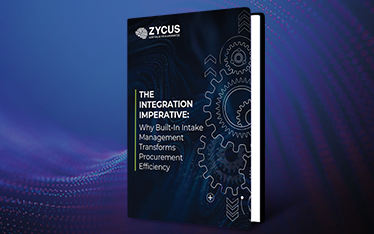Businesses are constantly faced with the task of adapting to stay ahead of the competition in the commercial environment. The global marketplace provides access to a vast array of goods and services by connecting companies with suppliers worldwide. However, the heightened reliance on suppliers exposes companies to a range of hazards that may cause operational disruptions. This is where a Supplier Risk Management Plan becomes crucial, helping businesses mitigate risks and ensure smooth operations.
In this blog, we will discuss the value of an enterprise supplier risk management, the distinctions between proactive and reactive methods, and the advantages of having a supply chain risk management plan.
Understanding Supplier Risk Management
A supplier risk management plan is an organized framework that aids companies in recognizing, evaluating, and reducing supplier-related risks. It entails using a methodical approach to analyze vulnerabilities, gauge supplier performance, and put plans in place to reduce supply chain interruptions. A well-designed SRMP can make the difference between a company that prospers and one that finds it difficult to endure in a cutthroat market.
Read our blog on: A Comprehensive Guide to Supplier Risk Management
A Look into Proactive vs. Reactive Approaches
Before we talk about how a supplier risk management plan can aid a business, we need to first understand the difference between a proactive and a reactive approach to manage and handle supplier risks.
Proactive Approach:
As the name suggests, a proactive approach is employed when potential supplier risks are identified and dealt with before they even culminate into real issues. This approach requires organizations to anticipate and prepare for contingencies. With a proactive approach in a supply chain risk management plan, a business can:
- Profile Risks: To identify vulnerabilities within the supply chain, firms can create in-depth supplier risk profiles across various risk categories, ensuring a precise and multidimensional view of vulnerabilities. Zycus’ Merlin for Risk is the perfect tool for this, as it leverages the power of AI to help with comprehensive risk profiling, real time risk alerts, supplier due diligence, and supplier analysis and segmentation.
- Reduce Costs: Over time, organizations can save money by recognizing and mitigating risks. Reducing the likelihood of supply chain disruptions, for instance, helps avoid expensive production delays.
- Improve Supplier Relationships: Working in tandem with their suppliers to understand potential risks they may be exposed to can improve rapport and foster confidence.
- Stay Ahead of the Curve: A pre-defined supply chain risk management plan can help organizations adapt to dynamic changes in the market and gain a competitive advantage.
Reactive Approach:
A reactive approach comes into play when mitigation strategies are put in place after the supply chain has been affected. This approach makes organizations work in a damage control mode, and can have dire consequences such as:
- Increased Costs: A time crunch managing supplier risk can lead to rushed orders, hunting for new suppliers in a short timeframe, and a struggle to meet deadlines, which significantly impacts on the bottom-line.
- Operational Disruptions: Improper supplier risk management has a direct impact on production in terms of quality and delay, thus translating into customer dissatisfaction and product unavailability.
- Impact on Reputation: An organization that regularly encounters supply chain problems risks losing the trust of stakeholders and customers.
- Loss of Market Share: Frequent supply chain disruptions can result in a loss of market share.
Trying to manage risks after the supply chain has been affected can drive customers to more dependable competitors.
Need of the Hour – Enterprise Supplier Risk Management Plan & Risk Mitigation
To devise a proactive enterprise supply chain risk management plan, organizations first need to understand the areas where supplier risks exist.
- Finance
- Supplier Performance
- Compliance and Regulations
- Reputation
- ESG and Sustainability
- Cyber Security
- Operations
A supplier risk management program begins with a structured approach to include the above-mentioned potential risks and create mitigation strategies.
A successful enterprise supplier risk management plan should include:
- An in-depth and objective risk assessment
- A risk map
- A risk tolerance level decided mutually between key stakeholders within the organization
With these elements, an enterprise-level supplier risk management plan can yield the following benefits:
- Enhanced Resilience: By detecting possible risks and vulnerabilities, a supplier risk management plan strengthens the resilience of an organization. Businesses can create plans to lessen these risks’ effects and preserve operational stability in times of crisis by being aware of these risks.
- Cost Savings: A proactive approach has the potential to save a lot of money. Reactive risk management can lead to expensive rush orders, production delays, and stockouts; it helps businesses avoid these problems.
- Improved Connections with Suppliers: Successful supplier risk management promotes cooperation and dialogue with suppliers. A more dependable supply chain is ensured and improved supplier relationships are fostered when both parties collaborate to reduce risks.
- Adherence to Regulations and Compliance: Businesses can maintain compliance with industry standards and laws by implementing a supplier risk management plan. Consequently, this can avert legal problems and penalties arising from non-adherence.
- Customer Contentment: A supplier management solution that is reliable increases client happiness. Customers become more dependable and loyal when they know they can rely on a business to provide results on time.
- A Competitive Edge: Businesses are more equipped to manage unforeseen obstacles and have a higher chance of surpassing their unprepared and reactive competitors when they have supplier management solution in place.
- Diversification of Risk: Businesses can lessen their reliance on a single source by diversifying their supplier base. This lessens the effect that a supplier’s failures will have on a company’s operations.
Read our report on: Supplier Risk Management Framework: A Comprehensive Approach to Mitigating Supplier Risks
Businesses must understand the significance of a supply chain risk management plan: a company’s operations, reputation, and financial performance can all be strongly impacted by the decision to adopt a proactive or reactive approach. In addition to reducing possible interruptions, proactive supplier risk management promotes cost savings, resilience, and improved supplier relationships.
A company’s ability to implement an efficient Supplier Risk Management Plan might mean the difference between success and failure. An enterprise-level supplier risk management plan offers several advantages, including improved supplier relationships, cost savings, proactive risk management, and competitive advantages. To ensure the future success of your business, explore Merlin for Risk and book a demo today!
Related reads:
- Choosing the Right Vendor Risk Management Software – A Buyer’s Manifesto
- Supplier Relationship Management: A Comprehensive Guide 2023
- Tech-Enabled Supplier Risk Assessment: Unlocking Cost and Time Savings
- 7 Key Considerations to More Effective Supplier Risk Management
- TechWatch: Transform Supplier Risk Management with iRisk
- Ensuring Efficient Supplier Risk Management with Supply Chain Transparency
- Solution: End-to-End Supplier Risk Management Software Powered by GenAI
- Solution: Supplier Management Software
- Solution: Supplier Information Management Software









